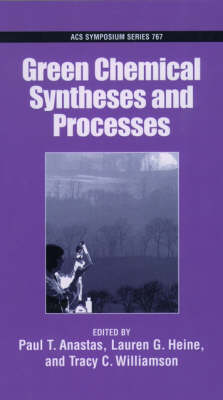ACS Symposium S.
1 primary work
Book 767
Green Chemical Syntheses and Processes
by Paul T. Anastas, Lauren Bartlett, and T.C. Williamson
Published 14 September 2000
There have been a number of recent advances in the area of green chemistry. This book contains some of the notable breakthroughs that have marked this science that is designed to reduce or eliminate the use and generation of hazardous substances. It addresses how recent advances in biocatalysis and biosynthesis can be used to make traditional chemical transformations more environmentally benign or, alternately, how it is inventing and discovering new chemical transformations that are intrinsically less hazardous. The new uses of known solvent systems as well as the exploration of new solvent systems are discussed in the context of its benefits both in terms of efficiency and environmental benefit. The area of designing safer chemicals provides some recent examples of how molecules as diverse as pesticides and dyes can be made more environmentally benign. The volume is part of a two-volume set devoted to promoting the concept of green chemistry. Each of these volumes aims to facilitate more widespread adoptions of these techniques by governments and chemical industry and lead to a greater overall understanding of green chemistry.
